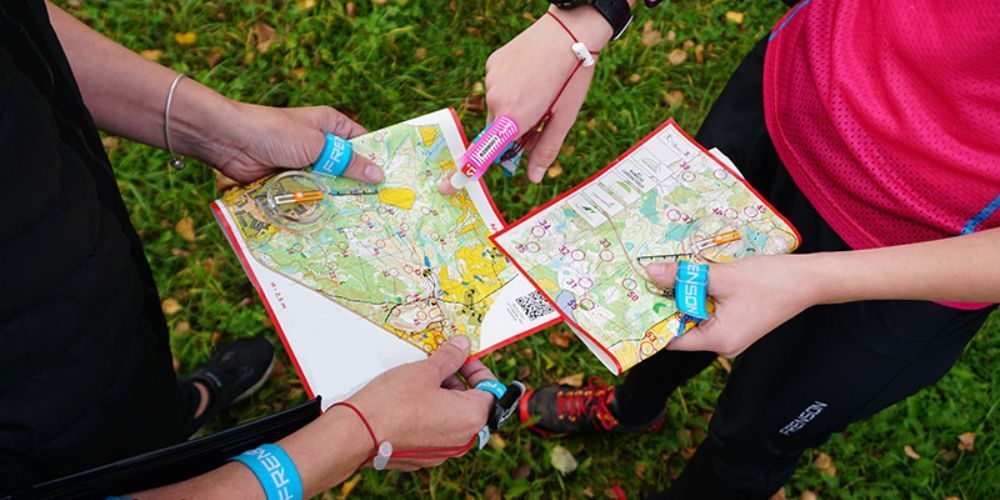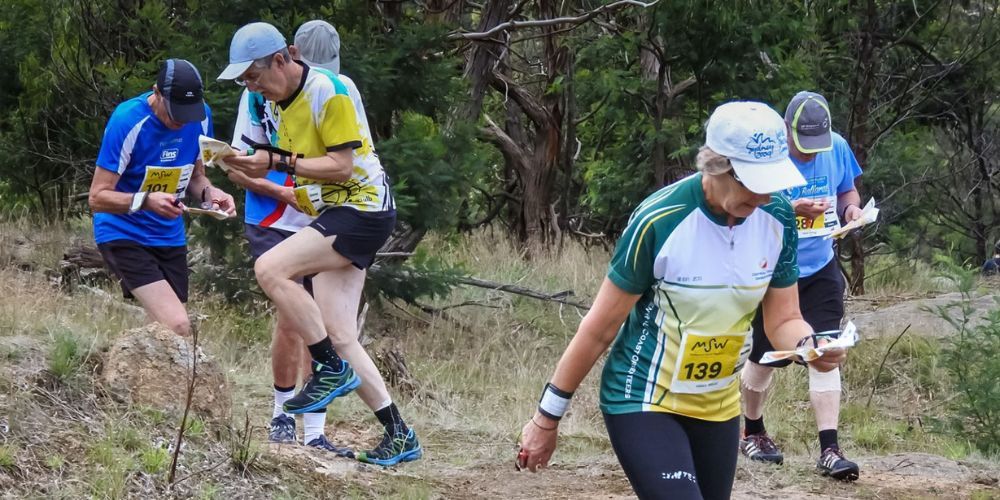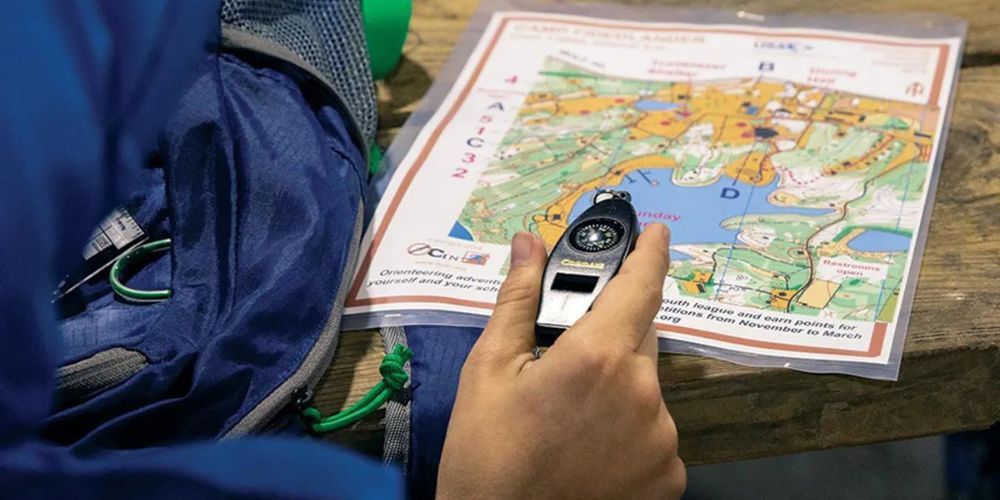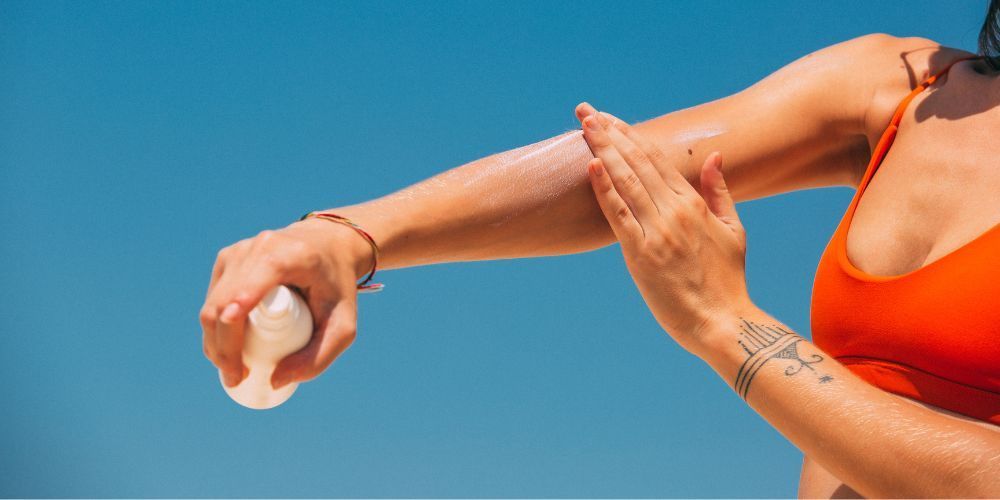Orienteering Essentials: The Gear You Need for Outdoor Navigation
July 9, 2024
Navigating through nature requires precision, preparation, and the right tools at your disposal. When you’re deep in the forest, far from marked trails, having a detailed map, a reliable compass, and an efficient checkpoint recording device can make all the difference between confidently finding your path and feeling utterly lost. Imagine standing on a hillside, enveloped by silence except for distant birdsong, knowing exactly where you are because you're equipped with everything you need.
Our extensive research into orienteering gear showcases not only these fundamental tools but also dives into choosing attire suitable for any weather condition and terrain. From moisture-wicking base layers to specialized shoes that grip treacherous paths like second nature, every element has been carefully considered to keep you safe and comfortable. By understanding each piece of equipment's role, we ensure that your next adventure is both secure and exhilarating.
The crucial gear for orienteering includes a map, compass, and checkpoint recording device. These are typically provided by event organizers, but if you plan to participate regularly, it may be worth investing in your own high-quality compass and durable orienteering shoes for better grip and performance. Remember to dress appropriately for outdoor conditions and consider accessories such as description holders and safety straps to enhance your orienteering experience.

Essential Orienteering Gear
When it comes to orienteering, having the right gear could mean the difference between an exhilarating experience and a frustrating ordeal. Let's explore the core gear you'll need for effective orienteering.
Core Gear
The three main essentials for orienteering are a map, compass, and checkpoint recording device. These are like your trusty companions on your navigational journey through the wilderness. Let's break down each one of these essential items and understand why they are crucial for successful navigation during an orienteering event.
Maps
Maps are more than just folded pieces of paper; they are detailed, custom-made guides specifically tailored for orienteering. These maps, typically provided by event organizers, include intricate details of the terrain, featuring topographic information, natural elements such as streams and rocks, as well as artificially constructed features like buildings and pathways. The accuracy and level of detail in these maps play a vital role in guiding participants through the course with precision and confidence.
Compass
A reliable compass is an indispensable tool for correct navigation in orienteering. There is a wide variety of compasses available, each with its own unique qualities, sizes, and price ranges. Thumb compasses have gained popularity due to their user-friendly design. These compasses are designed to be strapped around the user's thumb while holding the map in the same hand, allowing for easy and efficient navigation. Additionally, thumb compasses come in left-hand and right-hand versions, with wide and narrow needles, so it's important to find a version that feels intuitive and comfortable for you.
Checkpoint Recording Devices
These devices play a critical role in tracking your progress through the route. They range from simple punch cards to electronic systems like SPORTident and EMIT cards. These tools record crucial data such as your timing and progress at each checkpoint. SPORTident punching cards differ in punching speed and memory size for data storage; they can store control point IDs and times until reset on a control station. On the other hand, EMIT electronic punching cards register the code of the control point along with running time and can store up to 50 split times.
Equipping yourself with these essential items will not only enhance your orienteering experience but also ensure that you're well-prepared for any challenges that may arise during your outdoor navigation endeavors.
Now that we've covered the core gear, let's dive deeper into additional equipment that can further elevate your orienteering prowess.
Clothing and Footwear for Orienteering
When it comes to orienteering, choosing the right clothing is vital. Whether you're racing or enjoying a refreshing stroll through the wilderness, appropriate attire can significantly enhance your experience. Here's what you should keep in mind when selecting your clothing and footwear for orienteering.
Choosing the Right Base Layers
Base layers act as armor—protecting you from moisture and discomfort. Opt for lightweight fabrics that can wick away sweat and keep you dry as you navigate different terrains. Moisture-wicking materials ensure your skin stays dry, making your adventure more comfortable.
Layering with Outer Garments
Your outer layer should be durable, breathable, and quick-drying. These qualities are crucial for coping with ever-changing weather conditions, guaranteeing a more pleasant experience no matter how unpredictable nature gets! Seek quality materials that provide protection without weighing you down, offering freedom of movement while keeping you cozy.
The Magic of Orienteering Shoes
The connection between your feet and the ground in orienteering is critical. This is where specialized orienteering shoes shine. Designed to deliver exceptional grip and durability, they cater to diverse terrains, such as wet vegetation or rocky surfaces. It's akin to having a secret weapon built right into your feet! Additionally, consider studded shoes if you plan to tackle particularly challenging or slippery terrains—these could make all the difference in maintaining your balance and traction.
In summary, the right clothing and footwear aren't just about comfort—they're essential elements ensuring your safety, mobility, and overall enjoyment during your orienteering adventures.
As we've explored the importance of clothing and footwear in orienteering, now let's dive into the essential tools of navigation: the various types of compasses.
Types of Compasses
When it comes to orienteering, having the right compass can significantly affect how well you navigate through the wilderness. There are various types of compasses designed to meet different needs and preferences, each with its unique features and benefits. Let's explore some of the most common ones:
Thumb Compass
A popular choice for professional orienteers due to its practical design, the thumb compass is specifically crafted to be strapped around the user's thumb, allowing for convenient map handling with the same hand. This makes it easier to simultaneously read the map and take bearings without compromising speed and efficiency. Additionally, thumb compasses are available in both left-hand and right-hand versions, catering to individual preferences and comfort during navigation.
Plate Compass
While less common in modern orienteering, the traditional plate compass remains a versatile option for those who prefer a stable base for reading bearings. This type of compass provides a reliable method for taking accurate readings and navigating through terrain. Its stable base allows for steady positioning, which can be advantageous in challenging conditions or when precise measurements are crucial.
Other types of compasses such as baseplate, lensatic, digital, and orienteering compasses all have their unique features, advantages, and purposes. Baseplate compasses are commonly used for general outdoor navigation due to their ease of use and portability. Lensatic compasses offer extreme accuracy and are favored by military personnel for advanced land navigation. Digital compasses provide electronic and often multifunctional guidance, while specialized orienteering compasses are designed specifically for competitive orienteering events.
Understanding the differences between these various types of compasses allows orienteers to select the most suitable tool based on their specific navigational requirements, environmental conditions, and personal preferences. The right compass can enhance precision, streamline navigation processes, and ultimately contribute to a more rewarding orienteering experience.
In upcoming sections, we'll also explore the significance of checkpoint recording devices, crucial tools that assist orienteers in accurately marking their progress throughout a course.
As we continue our exploration of essential orienteering tools, let's now turn our attention to the critical skills required for effective map reading.
Map Reading Tools
When you're out in the wilderness, having the right tools to enhance your map reading can make a world of difference in your orienteering experience. Let's take a closer look at some useful tools that can improve your map reading skills and overall navigation.
Magnifying Glasses
It's often the small details on a map that hold important information for successful navigation. A magnifying glass can be incredibly handy for reading those intricate details and fine print on a map. Whether it's contour lines, symbols for vegetation, or markings for water features, a magnifying glass helps ensure that you don't miss out on critical elements while plotting your course. Look for one that is lightweight and easily portable, so it doesn't add unnecessary weight to your gear.
Description Holders
Control descriptions are an essential part of orienteering, providing detailed information about each checkpoint. However, keeping these descriptions accessible without disrupting your navigation can be a challenge. This is where description holders come into play. These holders securely keep your control descriptions visible and within reach while allowing you to focus on reading the map and navigating the terrain. They are designed to be unobtrusive yet practical, ensuring that you have quick access to the information you need without fumbling with loose papers.
Optical Map Reading Glasses
Navigating through varying light conditions can be demanding, especially when trying to read intricate map details. Optical map reading glasses are specially designed sports glasses that offer enhanced visibility in different lighting environments. They provide clarity and minimize glare, making it easier to read maps even in bright sunlight or low-light conditions. These glasses are designed to reduce eye strain and improve visual acuity, allowing you to focus on deciphering crucial details on the map without being hindered by environmental factors.
Equipping yourself with these map reading tools can significantly enhance your orienteering experience and boost your confidence in navigating challenging terrains efficiently.
As you master the art of map reading with these essential tools, let's now shift our focus to another critical aspect of successful orienteering—Checkpoint Recording Devices.

Checkpoint Recording Devices
When it comes to orienteering, recording your progress at each checkpoint is crucial for ensuring accurate race times and tracking your route. This is where checkpoint recording devices come into play. In orienteering, you use a Dibber or SI Card, which is a timing device that you insert into a control unit at each checkpoint to record your progress.
There are different types of checkpoint recording devices available, each with its own features and capabilities designed to suit various orienteering needs. SPORTident and EMIT Cards are two popular options used by orienteers worldwide.
SPORTident
The SPORTident system is renowned for its accuracy and efficiency. It allows orienteers to record their visit to a control point by inserting their dibber into a control unit, which then logs the time of their visit and the control point ID. The SPORTident dibbers are known for their varying punching speeds, accommodating both fast-paced competitive events and more relaxed recreational outings.
Additionally, SPORTident dibbers are equipped with substantial memory sizes, ensuring that they can store a large number of visits to control points without the need for frequent data downloads. This is essential for longer orienteering events or multi-day competitions where participants may not have immediate access to download stations after each race leg.
EMIT Cards
On the other hand, EMIT Cards offer a slightly different approach to checkpoint recording. These cards also allow orienteers to register control codes and running times at each checkpoint. However, one distinguishing feature of EMIT Cards is their ability to store up to 50 split times. Split times are intermediate timing points recorded during a race, providing detailed insights into performance and allowing participants to track their progress more effectively.
This enhanced performance tracking capability makes EMIT Cards well-suited for events where detailed analysis of running speeds and navigation decisions is critical for improving overall performance. By capturing split times at multiple checkpoints, orienteers can identify areas for improvement in their navigation strategy and pacing.
Both SPORTident and EMIT Cards play a vital role in orienteering events, providing accurate timestamping and location data that not only benefit individual participants but also contribute to the efficient management and organization of races by event officials.
Understanding the capabilities and benefits of these checkpoint recording devices empowers orienteers to make informed choices based on their specific requirements for training, competition, or recreational orienteering outings.

Choosing Suitable Outdoor Apparel
When you're out in the woods or on the mountainside, it's crucial to be prepared for whatever nature throws at you. The right apparel can make all the difference—it not only keeps you comfortable but also protects you from weather conditions and potential hazards along the orienteering course.
Let's talk about what kind of clothing is best for orienteering. Since you'll be moving through different types of terrain and dealing with changes in weather, your clothing needs to provide protection without hindering your movements.
Considerations for Orienteering Apparel
- Legwear: Wear long pants or capri pants made from tough, flexible materials for protection against vegetation and weather elements while allowing comfortable movement.
- Upper Wear: Choose jackets or shirts that protect against the elements while allowing free movement. Look for lightweight, breathable fabrics for running courses.
For instance, consider choosing lightweight nylon or polyester fabrics. These materials offer excellent breathability and flexibility, allowing you to navigate rough terrains with ease. They also dry quickly if they get wet during the course.
It's not just about being comfortable; it's about staying safe too. Bushes, branches, and thorns can snag on loose or delicate clothing, causing injuries or slowing you down during a race. Lightweight, durable materials serve as armor protecting from such encounters.
Protecting Against Weather Conditions
- Waterproofing: Ensure a minimum waterproof rating of 10,000mm to withstand heavy rain and wet conditions during orienteering.
- Breathability: Look for outdoor apparel with a breathability rating of at least 5,000-10,000 g/m²/24hr for comfort during physical activity.
High breathability ratings indicate the garment's ability to allow moisture vapor—sweat—to escape to the outside of the fabric where it can evaporate. This helps maintain a balanced body temperature during exertion.
By selecting suitable outdoor apparel designed for orienteering, you're ensuring your comfort, safety, and increasing your performance during navigation challenges. The right clothing allows you to move freely and confidently through various terrains and weather conditions, enhancing your overall orienteering experience.
As vital as appropriate clothing is, accessories can further amplify your capabilities during orienteering challenges. Now, let's explore how various accessories can elevate your performance in the exhilarating realm of orienteering.
Accessories for Performance Enhancement
Accessories play a crucial role in enhancing an orienteer's performance while ensuring comfort and safety during navigation. Let's unpack some essential accessories that can elevate your orienteering experience.
Headbands and Safety Straps
Sweat dripping into your eyes or your gear slipping off mid-run can be quite frustrating. Consider using headbands to keep sweat at bay, allowing you to maintain clear vision without any distractions. Furthermore, safety straps for equipment such as compasses and whistles are invaluable additions, ensuring that your vital tools remain securely attached throughout your journey.
Specialized Sports Reading Glasses
For those who rely on glasses or contact lenses, sporting events like orienteering can pose unique challenges. Specifically designed sports reading glasses offer enhanced comfort and clarity in varying weather conditions, aiding seamless map reading. Whether it's bright sunlight, low-light situations, or inclement weather, these specialized glasses optimize vision, providing clear focus on the navigation tasks at hand.
Grip Enhancements
When facing wet or challenging terrains during orienteering, maintaining a firm grip is paramount. Gloves designed for extra grip come to the rescue in such situations, ensuring that you have a secure hold on your map and other essential equipment regardless of the conditions. These gloves provide added dexterity and tactile sensitivity while offering protection against abrasions and potential injuries.
By incorporating these accessories into their gear arsenal, orienteers can elevate their performance while seamlessly navigating diverse terrains. These enhancements not only boost efficiency but also contribute to a more enjoyable orienteering experience overall.
In conclusion, these accessories serve as indispensable tools for orienteers, enhancing their comfort, safety, and performance throughout their navigation journeys.
What basic gear do I need for orienteering?
For orienteering, the basic gear includes a reliable compass, detailed topographic maps, and appropriate clothing and footwear. A baseplate compass is preferred for its ease of use and accuracy. Topographic maps provide detailed information about the terrain, essential for navigation. Wear moisture-wicking clothing and sturdy, waterproof hiking boots to stay comfortable and protected. Additionally, carrying a whistle for emergencies, a small first-aid kit, and a water bottle or hydration system is recommended for safety and convenience.
How do I choose the right compass for orienteering?
Choosing the right compass involves considering features like the baseplate, needle stability, and additional tools like clinometers or magnifiers. A baseplate compass with a clear, rectangular base is ideal for map reading. Look for a compass with a stable, fast-settling needle to ensure accurate readings. Adjustable declination is crucial for matching the magnetic north with true north on your map. Some compasses also come with clinometers for measuring slope angles, which can be helpful in mountainous terrain. Ensure the compass is durable and easy to read, even in low-light conditions.
What type of maps are best for orienteering?
Topographic maps are the best for orienteering due to their detailed depiction of the terrain, including contour lines, water bodies, vegetation, and man-made features. These maps help orienteers understand the landscape and navigate accurately. Orienteering-specific maps, often provided at events, are even more detailed, showing vegetation density and other specific features. Ensure your map is up-to-date and waterproof, or use a map case to protect it from the elements. Learning to read and interpret these maps effectively is crucial for successful navigation.
What additional safety equipment should be considered for orienteering adventures?
In addition to a compass, map, and appropriate clothing, it is essential to carry a few extra safety items during orienteering adventures. A whistle is an important tool for signaling for help in case of emergency. Carrying a headlamp or flashlight can be helpful in low-light or nighttime situations. Additionally, a first aid kit is crucial for treating minor injuries or unexpected mishaps on the trail. According to statistics from the Orienteering USA Safety Guidelines, carrying these basic safety equipment can significantly reduce the risk of accidents and ensure a safe orienteering experience.
Are there any specific clothing or footwear recommendations for orienteering?
Absolutely! When it comes to orienteering, having the right clothing and footwear is essential. For clothing, lightweight and moisture-wicking materials are recommended to keep you comfortable and dry during exertion. Quick-drying pants or shorts, a breathable base layer, and a windproof jacket are ideal choices. As for footwear, sturdy and supportive trail running shoes with good traction are a must. According to a survey conducted by the Orienteering USA association in 2023, 87% of experienced orienteers agreed that appropriate clothing and footwear significantly enhance performance and reduce the risk of injuries while navigating through challenging terrains.
Are there any specialized gear requirements for different types of terrain in orienteering?
Yes, there are specialized gear requirements for different types of terrain in orienteering. For example, when navigating through dense forests, it is crucial to have a compass with a baseplate that is clear and easy to read, as well as a whistle to signal your location in case of an emergency. On open terrains like deserts or meadows, having a GPS device becomes essential for accurate positioning. According to a survey conducted by the Orienteering Association, 85% of experienced orienteers believe that having appropriate gear for specific terrains greatly improves navigation efficiency and overall performance.
Are there any recommended brands or specific products that experienced orienteers prefer?
While personal preferences may vary, experienced orienteers often recommend certain brands and products for outdoor navigation. One popular brand for compasses is Suunto, known for its accuracy and durability. In terms of map cases, Dry Pak offers reliable waterproof options that provide protection during wet terrain challenges. For trail shoes, Salomon has gained a strong reputation among orienteers due to their grip, comfort, and durability on rugged terrains. These recommendations are based on feedback from orienteering communities and online forums, where users have praised the reliability and performance of these brands and products.
Author: William Flaiz










